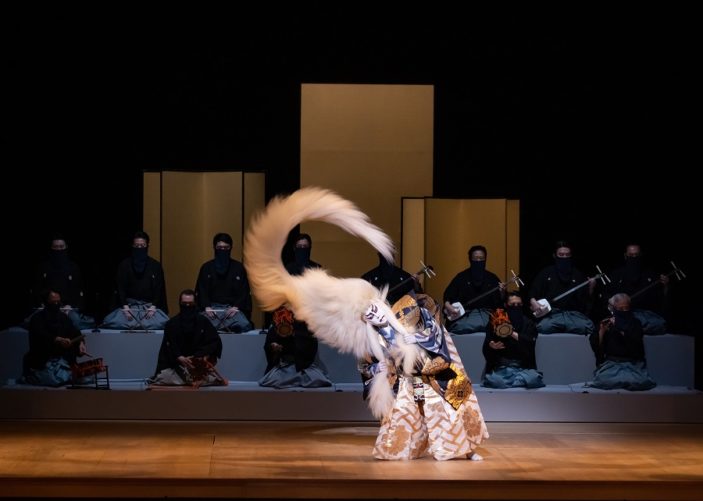
Japan is a nation well known for its far-reaching history and passion for keeping culture and traditions alive. From the ancient tea houses of Kyoto to the quaint building styles of Gifu’s Shirakawago, you can practically read the history of the nation through its architecture and city design. One of the more elusive forms of Japanese cultural preservation is the country’s performing arts scene. While international guests are not often as widely known, Japan’s stage arts are a fascinating combination of history, culture, art, and storytelling all wrapped into one, here’s a quick outline of where to learn more.
Kabuki
When most folks think about theatre, performing arts, and often traditional culture in Japan, they think of kabuki, the unofficial king of the stage. With its bold white stage makeup and spectacular costumes, it’s hard to miss.
Kabuki is so versatile; it should be considered almost more of a medium, like the television of the stage, rather than one type of theatre.
From laugh-out-loud comedies to romantic love stories, tales of great heroes, and legendary myths, it’s a spectacular combination of costuming, acting, music, and literature all wrapped into one.
The form was first born in Kyoto in 1603 by Izumo-no-Okuni, a legendary shrine maiden. During the Edo period (1603-1868), a time of great cultural evolution in Japan is when the form really flourished.
One of the most exciting aspects of kabuki is that many of its theatres are traditional; their histories reach back centuries, have been meticulously kept, and are still used for today’s performances.
Today many actors and producers behind kabuki shows – like actor Kikunosuke and the organization Japan Arts Council – are melding traditionalism with modernity, keeping the legacy alive but the form relevant for the modern-day. Some of the best examples are at the National Theatre in Chiyoda, where kabuki performances are accompanied by emotive and enthralling pieces of digital art. Of course it’s open to visitors as well as locals.
Website.
Noh
While some may accidentally categorize Noh under the umbrella of ‘kabuki,’ it’s actually a very different and unique style of performing art. In traditional Japanese theatre, actors are all male, but with the modern incarnation of the form comes more contemporary ideologies about gender equality in theatre. In Tokyo, there are also regular performances by The Japanese Theatre of the Deaf, who perform using a combination of noh acting and sign language.
Noh’s history dates back to the 14th century; it’s a form of theatre that blends dance, music, folklore, drama, and some very unforgettable masks. The masks the performers wear are incredibly restrictive. Remaining practically unchanged since their early days, the hard, often (hinoki) wooden masks feature only small eye-holes through which the performers can see. The masks portray the form’s key recurring characters and themes; there are around 450 different masks based on base sixty types, including young people, older people, animals, and demons.
Running at intervals between the main noh performance are skit-like shows known as kyogen. These pieces run for about 15 minutes and typically feature just three actors.
Some of the best shows to catch are run by the Japan Arts Council, which hosts performances on occasion at the National Noh Theater in Sendagaya.
Website
Bunraku
Bunraku could be best described as a Japanese puppet theatre. It’s a form found across cultures, but the version you’ll see here is very much unique to Japan. The form combines masterful puppetry with traditional music of the shamisen and rhythmic, almost hypnotic chanting known as ‘joruri’.
It’s an excellent experience for those who are visiting Japan and are nervous about not being able to understand Japanese as much of the storytelling lies in the visual aspect of the art. Unlike many other performing arts, bunraku was initially developed as a way of storytelling between common people. Over time it was more widely embraced by upper-class folks, and playwright Chikamatsu Monzaemon and renowned chanter Takemoto Gidayu joined forces to create a puppet theater in 1684. Monzaemon is such an influential player in the form he’s known colloquially as Japan’s Shakespear.
Tragic love, heroics, and supernatural themes, often taken from Japanese folklore, make up the bunraku’s key themes. The best place to see bunraku in Tokyo is the National Bunraku Theatre in Nihonbashi.
Website
—
If you’re interested in exploring more Japanese theatre culture from the comfort of your home, the Japan Culture Expo is running a very special livestream event, the “Presentation of Prayer” on March 14th, for more information, head to japanculturalexpo.zaiko.io.
